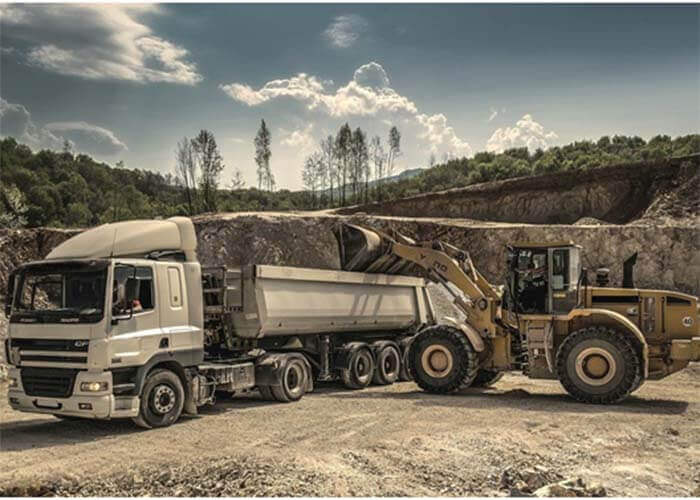
In the field of industrial fleet management, the correct LPWAN IoT technology must strike a balance between industrial-grade robustness and security, deep penetration, mobility and scalability, and other core standards.
From manufacturing, mining, oil, and gas to construction, vehicles, and mobile assets are the most critical assets in various industries. The Internet of Things for fleet management provides a huge opportunity to improve overall equipment effectiveness (OEE). In a data-driven economy, a low-power wide-area network (LPWAN) has become a new and feasible way to connect to the Internet of Things, and equipment manufacturers and industrial companies should not miss it.
The role of LPWAN IoT in fleet management
To stay connected, industrial mobile devices rely on wireless technology. Traditional fleet telematics solutions use cellular networks to track and measure fleet utilization. However, this method is expensive because it requires each machine or vehicle to have its own unit plan.
Cellular-based telematics can be rewarded in transportation and logistics applications, where connectivity beyond geographical boundaries is a must. However, the management of industrial fleets in enclosed areas such as factories, open-pit mines, construction sites, and farms requires a more cost-effective solution. In addition, cellular coverage is far from ubiquitous, leaving huge gaps in remote and underground locations.
LPWAN is specially constructed for low-bandwidth, long-distance sensor data transmission. It is a new multi-functional solution that connects mobile assets across industries. Providing a line-of-sight range of more than 10 kilometers, private LPWAN can be flexibly deployed to achieve reliable coverage in remote large-scale industrial parks. Due to its extremely low power consumption, LPWAN can also extend battery life, which is a major advantage because mobile assets are often far away from the power source.
Today, operators are looking for a plug-and-play IoT solution to avoid expensive fleet maintenance. LPWAN is easy to deploy and retrofit in existing equipment and can run at low cost, thereby providing operators with the best return on investment in IoT solutions.
The LPWAN IoT for Fleet Management, 3 Influential Applications
The sensor network that supports LPWAN collects information about equipment usage, speed, emissions, location, etc. This information is then forwarded to the cloud for long-term diagnosis and predictive analysis. Actionable insights can be gathered to help companies optimize productivity, regulatory compliance, and safety, and ultimately improve their profits.
1. Condition monitoring and predictive maintenance
The predictive analysis enables fleet operators to predict and correct failures before they occur, so as to keep abreast of the latest progress in maintenance. Built-in sensors can transmit key health and operating parameters of tires, hydraulic systems, engines, and other components of mobile assets.
Through the use of automatic alarms, the administrator can be notified of any intolerable deviations that indicate an impending abnormal situation. In this way, the replacement of fuel and parts can be planned in advance, and a maintenance plan can be developed to avoid costly downtime.
2. Asset optimization
Underutilized machines that have been idle for too long can cause fuel waste and increase the cost of capital equipment. The idle time data captured by the telematics sensors enables administrators to make informed decisions about the optimal size and composition of the fleet and whether to purchase or lease.
In addition, it can also detect unauthorized use outside of working hours to avoid any tampering or theft attempts.
In general, asset utilization data can help improve overall equipment effectiveness (OEE) and ultimately increase net profit margins.
3. Emission control and fuel consumption management
As climate change continues to be the top issue of global concern, fleet operators are facing increasing regulations and pressure to reduce their carbon footprint. In underground mines, emission control is also crucial to maintaining a safe working environment for miners.
By connecting devices supported by LPWAN, administrators can monitor exhaust emissions to ensure compliance with environmental and safety regulations. Similarly, information about vehicle status and operating modes can reveal bottlenecks and optimize fuel usage. For example, low tire pressure will increase fuel consumption and reduce gasoline mileage.
Which LPWAN IoT technology to choose from?
Not all LPWAN technologies can equally meet the needs of fleet and industrial asset management. For example, although supporting the high-speed movement of end nodes is an absolute prerequisite, many existing technologies lack this feature. In addition, due to extreme depths and unfavorable topography, harsh industrial environments such as underground mines pose great challenges in ensuring reliable connections.
In the field of industrial fleet management, the correct LPWAN technology must strike a balance between industrial-grade robustness and security, deep penetration, mobility and scalability, and other core standards.
Besides the LPWAN IoT For Fleet Management article, you may also be interested in the below articles.
What is the difference between WIFI and WLAN?
Summary of 41 Basic Knowledge of LTE
What Is The 5G Network Slicing?
